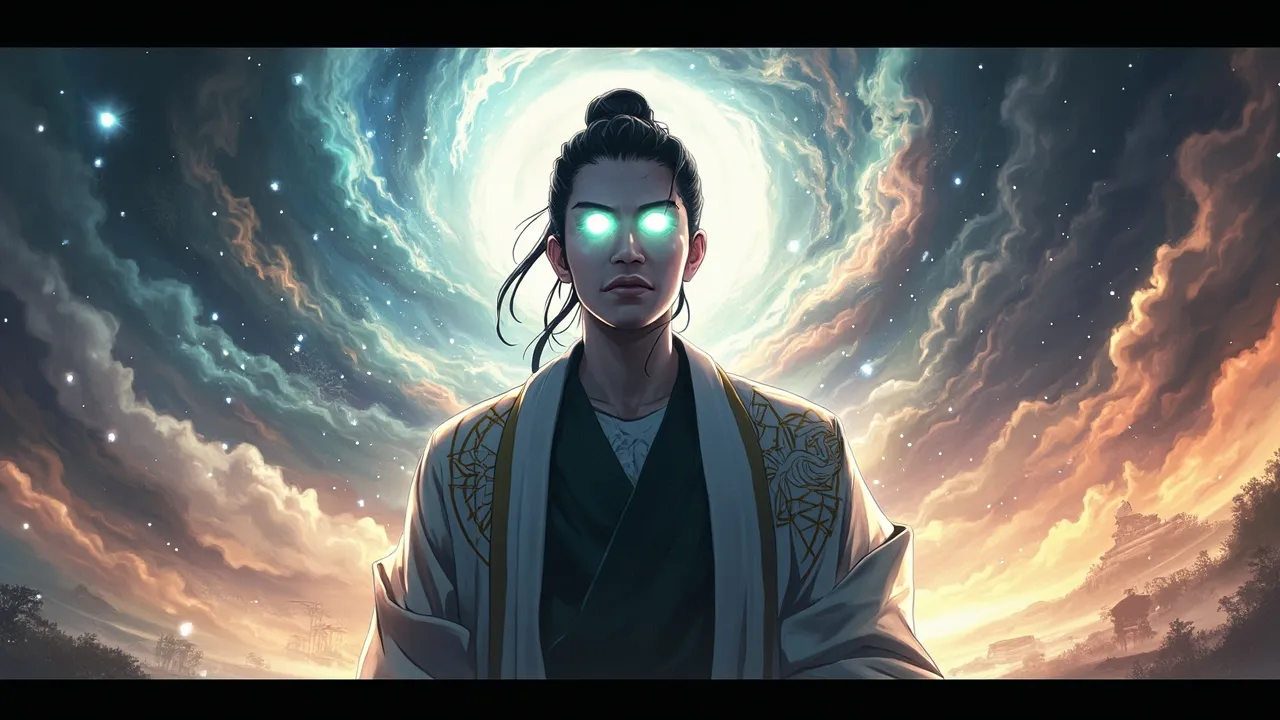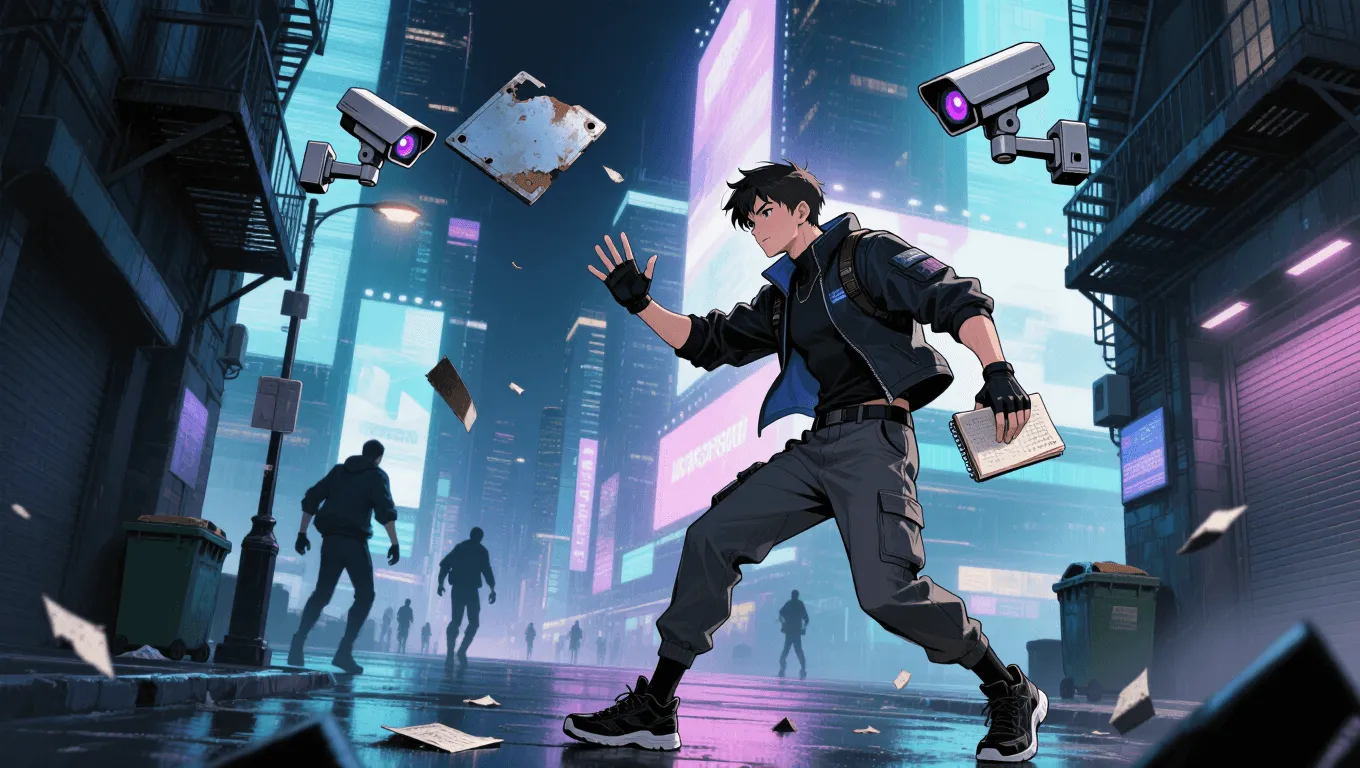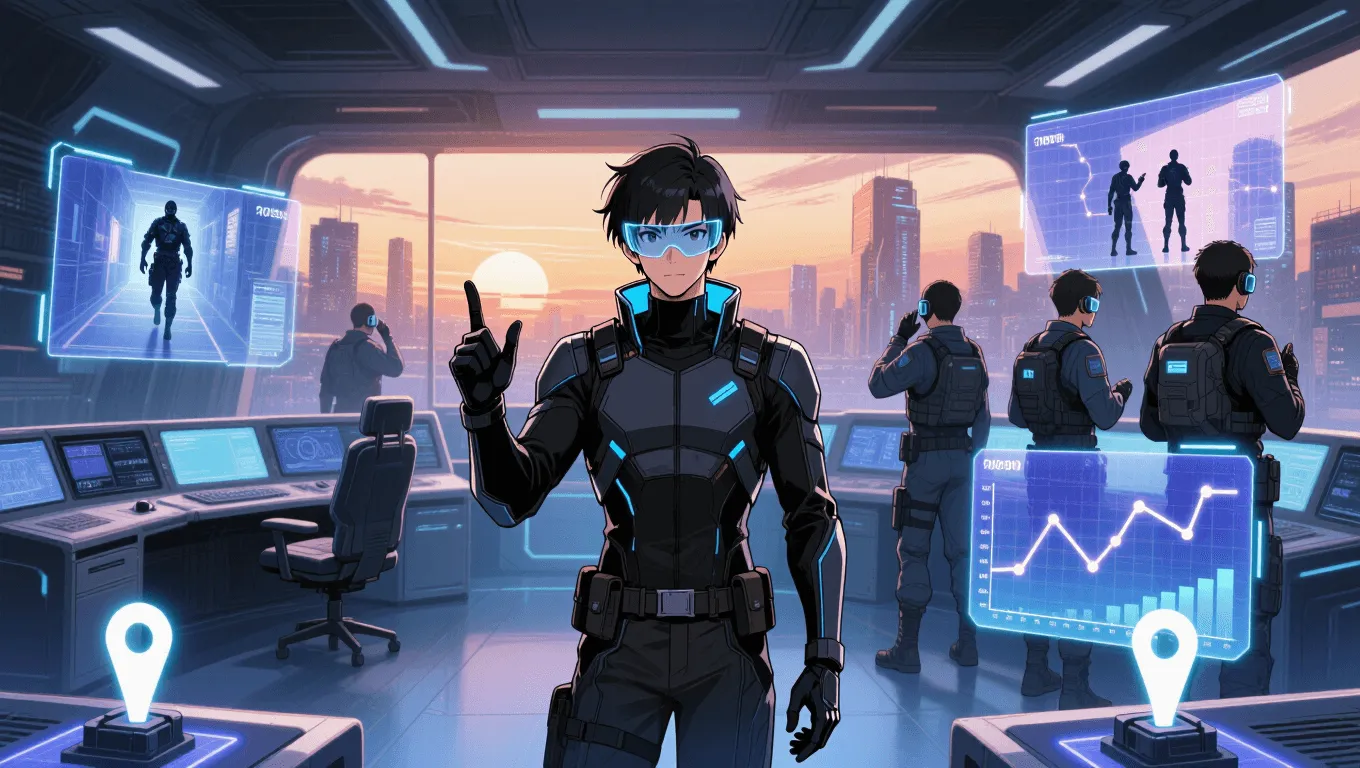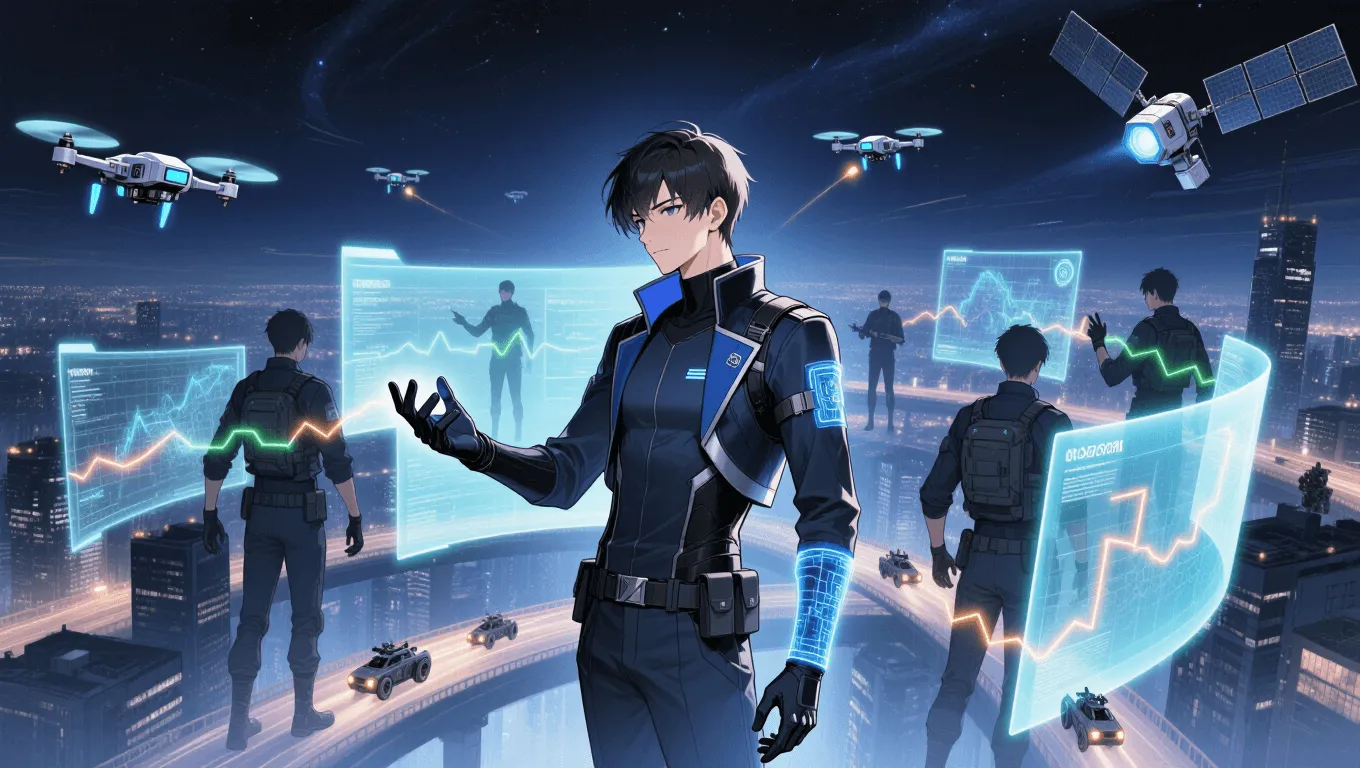Precognition Superpower Guide

Precognition Video Demo 🎬
Table of Contents
Precognition is the superpower of perceiving future events before they happen. In fiction and games, this future sight ranges from subtle premonitions to full prophetic vision, letting a character anticipate danger, select winning strategies, and avoid costly mistakes. Unlike time travel, precognition gathers information from potential timelines without physically moving through time. This guide explains how it works, its core abilities, tactical advantages, limitations, counters, synergistic combos, and well-known users—all in plain language. To explore more abilities, visit the list of superpowers or try the random superpower generator.
What Is Precognition
Precognition is a perception-based power that samples possible futures and delivers the most relevant signals to the user. Depending on the setting’s rules, the future may be fixed, probabilistic, or branching. Most modern stories adopt branching timelines: choices alter outcomes, so the power highlights likely paths rather than one guaranteed destiny. In practical terms, a user receives anything from a tingling danger sense to cinematic foresight of upcoming moments, along with rough odds attached to each decision.
Writers often group it with related ideas—premonition, foresight, danger sense, prophetic dreams, temporal perception, and probability awareness. Some worlds treat it as a subtype of clairvoyance focused on time instead of space. Others pair it with empathy or telepathy, where reading intent adds context to the previewed future.
Core Abilities of Precognition
Future Sight (Short Window)
This is a crisp preview of the next seconds or minutes. The user “sees” an incoming punch, a ricochet path, or the split-second when a guard looks away. Short-window foresight is the bread-and-butter of combat prediction and evasive movement.
Premonition and Danger Sense
A fast, low-detail alarm that something bad is about to happen. It triggers before ambushes, traps, betrayals, or environmental hazards. While it lacks imagery, the early warning buys vital reaction time.
Probability Mapping
Instead of one outcome, the user senses branching options with rough likelihoods. This “overlay” helps in stealth missions, negotiations, or puzzle solving. The user can mentally compare choices—go left vs. right, engage vs. retreat—and pick the path with the best risk-reward profile.
Prophetic Dreams and Vision Trances
Longer-range glimpses often arrive during sleep or meditation. These visions can be symbolic, fragmented, or metaphorical and require interpretation. They shine when the story needs foreshadowing of major events.
Timeline “Scrubbing”
Experienced users learn to scrub a few seconds forward in their mind—testing different reactions as if running micro-simulations. It isn’t time reversal; it’s preview-and-choose, like watching several short trailers and selecting the one to make real.
Information Anchors
To cut noise, the user plants anchors—specific details or timestamps to confirm they’re on the expected branch, for example, “If the blue drone turns at 14:03, Plan B is live.” Anchors help convert mystical foresight into repeatable tactics.
Application / Tactical Advantages in Combat
-
Anticipatory Defense: Dodges, parries, and shields trigger a beat before attacks land, compensating for average reflexes.
-
Perfect Timing: Strikes or counters are launched at the exact instant an opponent’s guard opens.
-
Ambush Immunity: Danger sense flags tripwires, crossfires, and stealth approaches, keeping the team out of kill zones.
-
Efficient Resource Use: Ammunition, stamina, and cooldowns are spent only when they influence the winning branch.
-
Team Orchestration: The user calls plays (“step now,” “cover in three”) because they’ve already previewed the successful sequence.
-
Non-Combat Leverage: In heists, diplomacy, and investigations, probability mapping points to phrasing, routes, or alibis most likely to succeed.
-
Environmental Mastery: Foresight accounts for moving platforms, collapsing structures, and weather shifts, turning hazards into opportunities.
Level: Level 1 🏙️, Level 2 🌇, Level 3 🌃
Level 1 🏙️: Intuitive Premonition

-
Scope: Split-seconds to a minute ahead. Mostly gut feelings, brief flashes, or tingles of danger.
-
Hallmarks: The character pauses at the right time, sidesteps falling debris, or “luckily” avoids surveillance.
-
Training Focus: Breathing control, quick acceptance of signals, journaling after-action notes to calibrate accuracy.
-
Best Use Cases: Street-level fights, urban chases, avoiding obvious traps.
Level 2 🌇: Guided Foresight

-
Scope: Minutes to hours, with modular vision sequences.
-
Hallmarks: Clearer images, the ability to test a handful of options, and basic probability overlays.
-
Training Focus: Building information anchors, speed-reading vision content under stress, communicating callouts to allies.
-
Best Use Cases: Coordinated team ops, stealth infiltration, timed extractions, complex negotiations.
Level 3 🌃: Strategic Precognition

-
Scope: Hours to days for pivotal events; sometimes further for highly stable outcomes.
-
Hallmarks: Branching awareness at scale, refined odds estimates, and strong filters against symbolic noise.
-
Training Focus: Ethics (avoiding harmful “butterfly effects”), fusing intel and sensors with foresight, counter-countermeasure planning.
-
Best Use Cases: Campaign leadership, multi-phase battles, thwarting layered traps, guiding large groups over long arcs.
Limitations of Using the Precognition
-
Forecast, Not Certainty: Branching futures mean any new decision can invalidate a vision. Overconfidence is a classic failure mode.
-
Cognitive Fatigue: Running multi-branch previews taxes concentration, leading to headaches, nosebleeds, or decision paralysis in prolonged use.
-
Interpretation Risk: Symbolic or partial visions need decoding. Misreading a metaphor can send the team into a trap.
-
Range vs. Resolution: Long-range glimpses are vague; short-range views are sharp but narrow. No user gets both perfect scope and perfect detail.
-
Line-of-Effect Boundaries: Some settings restrict foresight to events the user could plausibly sense or influence, preventing omniscience.
-
Temporal Noise and “Null Zones”: Anti-precog fields, probability scramblers, or chaotic environments can jam or distort readings.
-
Ethical Tangles: Preventing one disaster may produce another. Characters must balance intervention with humility.
Weakness Against What Other Superpowers
-
Probability Manipulation (Hostile): An enemy who actively bends odds can slide the target’s best branch out from under them, degrading predictions mid-fight.
-
Chaos Induction / Entropy Fields: Randomized cadences and volatile environments increase noise, reducing clarity.
-
Time Stop / Extreme Time Dilation: If time freezes or flows at unfamiliar ratios without cues, previews provide little actionable data.
-
Psychic Cloaking / Mind Blanking: Hiding intent removes micro-signals that support short-window predictions.
-
High-Grade Illusions and Misdirection: False inputs seed false conclusions. If the battlefield is a lie, so is the preview.
-
Precognition Dampeners: Tech or magic that blocks temporal sensing creates blind spots or baits with false positives.
-
Erratic Speedsters: Ultra-fast opponents who vary rhythm unpredictably can outpace the user’s ability to act on previews.
Synergistic Power Combos
-
Enhanced Reflexes or Agility: Foresight selects the move; superior reflexes execute it within tiny timing windows (bullet dodging, precision counters).
-
Tactical Computation / Smart HUDs: Overlay predicted trajectories, cone-of-fire maps, and risk heatmaps for teamwide coordination.
-
Telepathy or Empathy: Reading intent adds context to ambiguous previews; together they cut interpretation lag.
-
Stealth and Invisibility: Knowing when observers will glance away turns infiltration into choreography.
-
Teleportation / Short-Range Blink: Preview an incoming strike and blink behind the attacker for guaranteed punish opportunities.
-
Probability Boost (Allied “Luck”): Foresight finds the best branch; luck powers reinforce it, converting likely wins into near-certainties.
-
Multimodal Senses (Radar, Echolocation, Thermal): Better present-state data means better future-state predictions—garbage in, garbage out.
Known Users
-
Destiny (Irene Adler) — a mutant famed for long-range foresight and probability awareness. Marvel profile
-
Madame Web — a clairvoyant connected to the Spider-Man mythos, known for visions and guiding heroes through branching outcomes. Marvel profile
-
Dream Girl (Nura Nal) — a member of the Legion of Super-Heroes with predictive dreams that steer team strategy. DC profile
-
Spider-sense–style danger detectors — characters whose extra-sensory “tingle” functions as short-range future awareness, enabling acrobatic combat and ambush avoidance. A prominent example is Spider-Man.
See more abilities on the list of superpowers or discover one at random with the random superpower generator.
